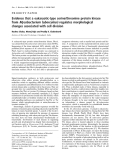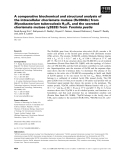
Journal of Medicine and Pharmacy - No.5
74
1.INTRODUCTION
Tuberculosis remains a major cause of
morbidity and mortality in many countries and a
significant public health problem worldwide. The
emergence of drug resistant strains and particularly
multidrug-resistant strains of Mycobacterium
tuberculosis, has become a significant public
health problem in a number of countries and an
obstacle for an effective control of tuberculosis.
Tuberculosis is the number one cause of death in
people with HIV/AIDS [1].
In 2012, there were an estimated 8.6 million
incident case of tuberculosis (range, 8.3 million
- 9.0 million) globally, equivalent to 122 cases
per 100,000 population [2]. Tuberculosis is still a
major health problem in Vietnam. Vietnam ranks
12 out of the 22 highest TB-burden countries
identified by the World Health Organization. In
2011 in Vietnam, 91,500 new cases of TB were
identified, with almost 9,000 previous cases
needing retreatment, and approximately 30,000
people died from the disease [1].
The early, rapid and accurate detection of TB
CME:
A REVIEW OF LABORATORY DIAGNOSIS OF
TUBERCULOSIS
Ngo Viet Quynh Tram
Dept. of Microbiology, Hue University of Medicine and Pharmacy, Vietnam
Summary
The consequences of tuberculosis on human society are immense. Tuberculosis remains a major cause
of morbidity and mortality in many countries and a significant public health problem worldwide. Active
tuberculosis is diagnosed by detecting Mycobacterium tuberculosis complex bacilli in specimens from
the respiratory tract (pulmonary TB) or in specimens from other bodily sites (extra pulmonary TB). Rapid
diagnostic tools are urgently needed to interrupt the transmission of tuberculosis and multidrug-resistant
tuberculosis. Laboratory confirmation of TB and drug resistance is critical to ensure that people with TB
signs and symptoms are correctly diagnosed and have access to the correct treatment as soon as possible.
There have been many advances in methodology for tuberculosis diagnosis and earlier diagnosis
is of value clinically, and through the early institution of appropriate drug therapy is of public-health
benefit. Although many new molecular diagnostic methods have been developed, acid fast bacilli smear
microscopy (positive in only half of TB patients) and culture on Lowenstein-Jensen medium (results take
weeks to obtain) are still the “gold standards” for the diagnosis of active TB and, especially in low-resource
countries.
At present many of new techniques are only economically viable in the developed nations, it is to be
hoped that recent advances will lead to the development of novel diagnostic strategies applicable to use in
developing nations, where the burden of tuberculosis is greatest and effective intervention most urgently
required.
Key words: Tuberculosis, laboratory diagnosis.
and drug resistance relies on a well-managed
and equipped laboratory network. Laboratory
confirmation of TB and drug resistance is critical
to ensure that people with TB signs and symptoms
are correctly diagnosed and have access to the
correct treatment as soon as possible [18].
Active tuberculosis (TB) is diagnosed by
detecting Mycobacterium tuberculosis complex
bacilli in specimens from the respiratory tract
(pulmonary TB) or in specimens from other
bodily sites (extra pulmonary TB). Although
many new (molecular) diagnostic methods have
been developed, acid fast bacilli (AFB) smear
microscopy and culture on Lowenstein-Jensen
medium are still the “gold standards” for the
diagnosis of active TB and, especially in low-
resource countries, the only methods available
for confirming TB in patients with a clinical
presumption of active disease. AFB smear
microscopy is rapid and inexpensive and thus is a
very useful method to identify highly contagious
patients. Culture is used to detect cases with low
- Corresponding author: Ngo Viet Quynh Tram, email: qtramnv@gmail.com
- Received: 31/5/2014 * Revised: 24/6/2014 * Accepted: 25/6/2014 DOI: 10.34071/jmp.2014.1e.13





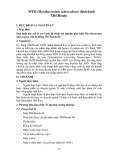
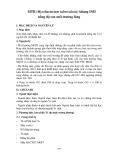

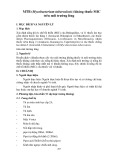
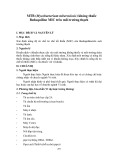
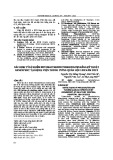
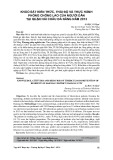

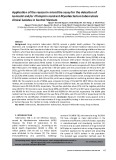
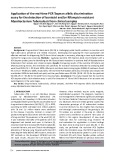

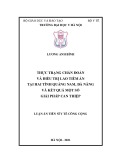
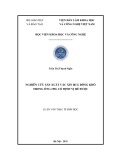
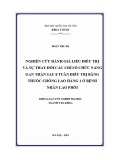
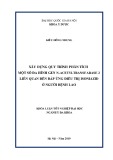
![Synthesis and anti-tuberculosis studies of 10-phenyl sulfonyl-2-alkyl/aryl- 4, 10 dihydrobenzo [4, 5] imidazo [1, 2-a] pyrimidin-4-one derivatives](https://cdn.tailieu.vn/images/document/thumbnail/2020/20200525/tocectocec/135x160/3621590394727.jpg)

